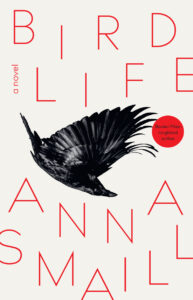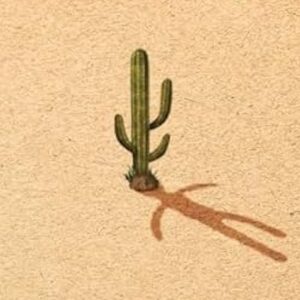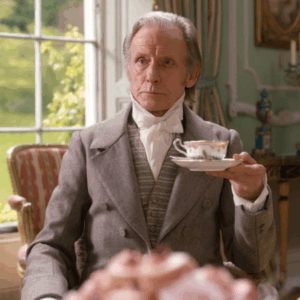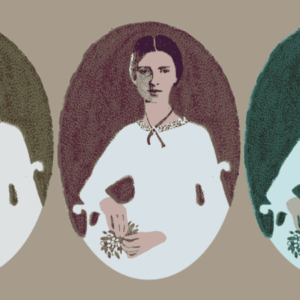
Lost in the Supermarket: On the Literature of Shopping
Anna Smaill Considers the In-Between Zone of the Fictional Shop
Verlaine famously insisted that the thought of writing a sentence like “the count walked into the drawing room” had forever put him off writing a novel. With a kind of perversity, I wonder how he’d have faced a sentence like “the count walked into the corner store and stood for several minutes reading cereal packets.”
Shopping is a commonplace, mundane sort of activity, even for the count. In literature, characters pass through the marketplace en route to a more pressing engagement. Exceptions exist, of course (the chilling parental horror of Ian McEwan’s The Child in Time springs to mind) but in general, pivotal plot developments don’t occur in the supermarket. Certainly not in the cereal aisle.
Yet it is the incidental quality of shopping scenes that draws me to them. Rather than plot, they provide texture—the thickening of a world. In them, characters let down their guard. The low-stakes ritual offers up a moment of respite, even while storyline is breathing down one’s neck. Shop often figure as a kind of threshold in literature—between the known and the unknown; between ordinary life and adventure—an in-between zone.
One of my favorite categories of the subgenre is the “getting-in-supplies” set piece. As if a shopping list will protect him from the implacable Anton Chigurh, Llewellyn Moss in No Country for Old Men buys “a 12-gauge Winchester pump gun and a box of double ought buckshot shells,” and then “a hacksaw and a flat mill file and some miscellaneous items.” Jeevan in Station Eleven pushes his convoy of shopping carts filled with necessities: water, cereal, toilet paper “more canned goods, also frozen meat and aspirin, garbage bags, bleach, duct tape,” before Emily St. John Mandel, like a patient mother at the checkout, permits him a final impulse purchase.
“This flu, Laura. It’s really fast. Hua told me. It’s spreading so quickly. I think you should get out of the city.” At the last moment, he added a bouquet of daffodils.
Of course, what often takes place in these liminal spaces is wish fulfilment. There’s a well-worn truism that food in children’s literature functions in the same way as sex in adult’s literature. Shopping could also fit the bill. As a kid with no pocket money, the idea of limitless consumer freedom was a truly potent one for me, and I lusted after it in fiction.
I was in love with J.P. Martin’s Uncle novels—surreal comic tales about a billionaire elephant. And in them, in particular, the allure of Cheapman’s store—a place where you could buy a motorbike, a sewing machine, and a four-course meal for a matter of pennies. If food and shopping were combined?—pure magic. How brilliant and enduring is the fictional sweet shop from Pippi Longstocking, to Charlie and the Chocolate Factory and Harry Potter.
The satisfaction of shopping in children’s literature is possibly even more memorable when the purchases are hard won. I often think of the scrimped-for audition dresses in Noel Streatfeild’s Ballet Shoes. Or the remarkable home economy of Dicey, in Homecoming by Cynthia Voight, who—abandoned by her mother in a mall parking lot—keeps her brothers and sisters alive on their long journey, with canny purchases of peanut butter, stale white bread, discounted hotdogs.
Perhaps because language, the act of naming itself, has its own acquisitive drive, writing about shopping somehow distills its sensory pleasure. The work of description—the selection and arrangement of words in new relationship—somehow recreates shopping’s decisive pleasures. Here, poetry truly comes into its own. Many poems themselves seem functionally related to the shopping list or the catalogue. With enumerative, additive glee, each imagined item is held in crisp white space. Poem as analogous with the Instagram flat lay?
It’s hard to go past the consumer temptations, of Christina Rosetti’s “Goblin Market”
Come buy, come buy:
Apples and quinces,
Lemons and oranges,
Plump unpeck’d cherries,
Melons and raspberries,
Bloom-down-cheek’d peaches,
Swart-headed mulberries,
Wild free-born cranberries,
or Frank O’Hara’s Lunch Poems. In “The Day Lady Died” O’Hara’s purchases include “a hamburger and a malted,” “an ugly NEW WORLD WRITING to see what the poets / in Ghana are doing these days,” “a little Verlaine for Patsy with drawings by Bonnard,” “a bottle of Strega” (for Mike), and “a carton of Gauloise and a carton of Picayunes.” And of course the final, fateful copy of the New York Post with Billie Holiday’s face on it.
It is the incidental quality of shopping scenes that draws me to them. Rather than plot, they provide texture—the thickening of a world. In them, characters let down their guard.
The pleasure behind shopping is also, of course, the pleasure of choosing. This curatorial drive is what makes the shopping expedition such a boon for characterization. We learn so much of Clarissa Dalloway in the flower shop, her descriptions tracing a biography of personal pleasure:
How fresh like frilled linen clean from a laundry laid in wicker trays the roses looked; and dark and prim the red carnations, holding their heads up; and all the sweet peas spreading in their bowls, tinged violet, snow white, pale—as if it were the evening and girls in muslin frocks came out
And if we return to Llewelyn Moss, now—shopping for clothes in his blood-stained hospital gown, having grasped the futility of the Winchester 12-gauge, and shortly to meet his end—we must admire both his, and by extension McCarthy’s, insistence on aesthetic preference.
I think a hat would be good. You got any of them stockman’s hats with the small brim? Seven and three-eights?
Yes we do. We have a three X beaver in the Resistol and a little better grade in the Stetson. A five X, I think it is.
Let me see the Stetson. That silverbelly color.
All right sir. Are white socks all right?
White socks is all I wear.
The joy of such scenes for me, is that they complicate what has historically been seen as a typically feminine pursuit. In fiction, a talent for shopping is allowed to bespeak deeper discernment, fluency and mastery. Shopping as superpower. When I first encountered Maxine Hong Kingston’s The Woman Warrior, I fell in love with a passage in which the narrator’s mother, after completing her medical degree, goes to Canton market to shop. The scene’s a declaration of freedom. The market is both an opening into a new world and a demonstration of the intelligence, courage and discernment that led her to it:
Her wallet had unfolded like wings. She had received her diploma, and it was time to celebrate. She had hunted out the seed shops to taste their lichees, various as wines, and bought a sack that was taller than a child to bedazzle the nieces and nephews. […] She had bought a turtle for my grandfather because it would lengthen his life. She had dug to the bottom of fabric piles and explored the shadows underneath awnings. She gave beggars rice and letter-writers coins so that they would talk story.
In Love in the Time of Cholera, a similar magic occurs when Fermina Daza returns from her exile in the country and visits the Arcade of the Scribes:
She sank into the hot clamor of the shoeshine boys and the bird sellers, the hawkers of cheap books and the witch doctors and the sellers of sweets who shouted over the din of the crowd: pineapple sweets for your sweetie, coconut candy is dandy, brown-sugar loaf for your sugar [.…] she went to the candy sellers sitting behind their big round jars and she bought six of each kind, pointing at the glass because she could not make herself heard over all the shouting: six angel hair, six tinned milk, six sesame seed bars, six cassava pastries, six chocolate bars, six blancmanges, six tidbits of the queen, six of this and six of that, six of everything, and she tossed them into the maid’s baskets with an irresistible grace and a complete detachment from the stormclouds of flies on the syrup, from the continual hullabaloo and the vapor of rancid sweat that reverberated in the deadly heat.
These women are alone, independent. Their path is self-delighting. But shopping also places them right at the heart of the spectrum of social life. And that’s another crucial element: shopping allows one to be alone, but also to be seen. The reader is of course, part of this web of witnesses. We watch with disdain or approval.
There is, of course, an eroticism of shopping. An earnest of emotional and sensual connection through indication of shared taste. We look over a character’s shoulder and examine the quality of her goods. Du Maurier flirts with this readerly instinct, as she mercilessly emphasizes the gulf between Rebecca’s decisive and perfect good taste, and the second Mrs. De Winter’s inability to successfully even order under-linen from a catalogue.
And within this web of eyes, we find another figure doubling the reader’s gaze—that of the fictional lover. In fiction, the trifecta of shopping, stalking and seduction pops up surprisingly often. In the passage above, it is really Florentino Ariza, not us, witnessing Fermina Daza navigate the chaos of the arcade with such aplomb. It is he who is dazed by her pleasure in the sensory, her insouciant and commanding confidence.
In Barbara Trapido’s Brother of the More Famous Jack, the protagonist Katherine’s purchases of cherry jam and a John Donne paperback catch the eye of an eligible older man: “‘Just the jam and the poetry?’ he said into my ear.” Katherine Mansfield knew this fruitful dynamic vividly. In “Feuille d’Album” from Bliss, a reclusive painter is drawn out of his shell by a young girl whom he spies and ultimately stalks as she’s shopping:
She was an age at the draper’s matching something, and then she went to the fruit shop and bought a lemon. As he watched her he knew more surely than ever he must get to know her, now. […] He saw her through the window buying an egg. She picked it out of the basket with such care—a brown one, a beautifully shaped one, the one he would have chosen.
Mansfield takes her revenge on this snooping behavior. The hapless lover buys another egg, and presents it: “Excuse me, Mademoiselle, you dropped this.”
What I’m writing here, I suppose, is my own personal catalogue, my own idiosyncratic shopping arcade. No one is asking me to choose my favorite kind of shopping scene, but if they did, I would have no hesitation. Shopping is social, certainly, but it also holds out the possibility for something intensely private—transformation. The makeover scene is a classic of film and fiction, and it has fairy tale at its heart. Cinderella. Cap o’ Rushes. Somebody enters a shop; they cross a threshold; they emerge as somebody new.
Shopping allows one to be alone, but also to be seen. The reader is of course, part of this web of witnesses. We watch with disdain or approval.
For me one the most heartbreaking of Sylvia Plath’s late letters is one she sent to her mother in November 1962.
I took Mrs. Prouty’s first check, as she said to, and went to the Jaeger shop in Exeter. It is my shop. I bought an absolutely gorgeous camel suit… and matching camel sweater, a black sweater, black and heavenly blue tweed skirt, dark-green cardigan, red wool skirt […] I feel like a new woman in them.
Buying something is becoming new again. It is an act of reinvention, and therefore of optimism. It is a commitment to being in the world. I think of this passage often. The bid for pleasure, for change, for hope.
In my novel Bird Life, the protagonist Dinah—grieving the death of her brother, astray and lost in the world—goes to Shinjuku in Tokyo with her friend Yasuko. There, Yasuko buys her a suit. The scene is a homage to shopping—its incidental nature, its sensory pleasure and its deeper possibilities for self-definition, for radical reinvention:
The girl looked away from her own reflection, perhaps with some reluctance, and back to Yasuko. Yasuko knew that, even as she stood there in bare feet, even with her tee-shirt beneath the jacket, she had seen something that could not be unseen. She had seen that she was changed, powerful.
It was nothing, in the end that Yasuko had done. The suit had played its part in the magic, certainly. The seams, the length, the weight, the balance, the shoulders, where the button was placed and how it fell from her back. The colour that did something quite unexpected to her skin. The cut that made the garment a kind of armour. But really the transformation was something that was happening in the girl itself. It had started, and it would be ongoing, and it was extraordinary.
______________________________________

Bird Life by Anna Smaill is available now via Scribe.
Anna Smaill
Anna Smaill is a poet and novelist. She was born in Auckland, New Zealand and lived in Tokyo for two years before moving to the United Kingdom where she completed a PhD at University College London. In 2015, she published her debut novel, The Chimes, which won the World Fantasy Award and was longlisted for the Booker Prize. She lives on Wellington’s south coast with her husband and their two children.












